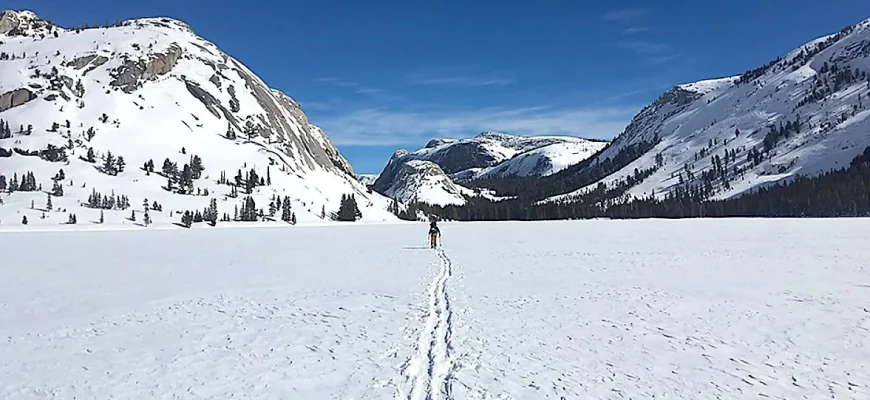There is a famous myth that the Inuit (or, as they were known by European settlers in the past, Eskimos) have a plethora of different words for snow. It has been exposed time and time again as poor scholarship, and a cliché used to support a controversial hypothesis known as linguistic relativity.
Linguistic relativity proposes that a language’s vocabulary (among other features) shapes or limits its speakers’ view of the world. This interpretation is widely criticised by linguists (although a 2010 study does support the core notion that the Yupik and Inuit languages have many more root words for snow than the English language). Linguistic relativity is usually tied to larger discussions on the connections between language and thought.
Inuit words for snow
Firstly, in linguistic terminology, the languages we are discussing in this article are the Eskimo–Aleut languages, specifically the Yupik and Inuit varieties. The idea of the many Inuit words for snow originates from an assertion by anthropologist Franz Boas in his book, The Handbook of North American Indians:
“…just as English uses derived terms for a variety of forms of water (liquid, lake, river, brook, rain, dew, wave, foam) that might be formed by derivational morphology from a single root meaning ‘water’ in some other language, so Eskimo uses the apparently distinct roots aput ‘snow on the ground’, gana ‘falling snow’, piqsirpoq ‘drifting snow’, and qimuqsuq ‘a snow drift’.”
Franz Boas, The Handbook of North American Indians (1911)
The linguists Edward Sapir and Benjamin Whorf, expounded on this as evidence for their theory of linguistic relativity. In a 1940 article on the subject, Whorf asserts that the Inuit have seven words for snow. From here, the urban myth snowballed (sorry), culminating in a New York Times editorial which asserted that,
‘Benjamin Lee Whorf, the linguist, once reported on a tribe that distinguishes 100 types of snow — and has 100 synonyms (like tipsiq and tuva) to match.’
New York Times
Many academics have exhaustively documented this process. An excellent article from American Anthropologist, for example, traces every stage of its development. Linguist, David Wilton demolishes it in his Word Myths: Debunking Urban Legends (a summary of his argument is here). A debate on the Economist’s language blog, found a majority of linguistic academics felt Sapir/Whorf had been outdated and superseded.
In short, there can surely be no-one in the world of linguistics who isn’t aware that the ‘Eskimos have X words for snow’ story is a falsehood. (Leaving aside, of course, the fact that there is no such language as ‘eskimo’.)
The real Inuit words for snow
So, how do the Inuit generally describe snow?! There are a dozen basic words (those that are not derived from another word) which refer to snow, and about ten words referring to ice. Examples include:
qanik — snow falling
aputi — snow on the ground
pukak — crystalline snow on the ground
aniu — snow used to make water
siku — ice in general
nilak — freshwater ice, for drinking
qinu — slushy ice by the sea
However, the basic words used by the Inuit to describe different types of snow or ice, do not translate everything they can say about these elements. There are in fact several other ways to describe the various forms they can take.
In Nunavik, for instance, it is possible to call the snow in which one sinks, maujaq. However, this is a general term that can be used to describe any type of soft ground (mud, wetland, quicksand). But which, in winter, can only apply to soft snow where the foot sinks. In the same way, the word illusaq (“what can become a house”) refers to any construction material (wood, stone, brick, etc.), but when building an igloo, it applies precisely to snow that is both rigid and manoeuvrable enough, for erecting a house made of snow blocks.
The construction of Inuit languages
In the Inuktitut language words generally comprise a base element (the radical), which provides the basic meaning, plus other elements (the affixes) added to clarify and/or modify the basic meaning. New words can therefore easily be created from base terms. For example, the word qanik refers to falling snow, while qanittaq (“added snow”) refers to freshly fallen snow.
Similarly, words that refer to ice are not limited to the basic forms. For instance, besides siku (“ice in general”), the term sikuaq (“small ice”) refers to the first layer of thin ice that forms on puddles, while sikuliaq (“made ice”) is the new ice appearing on the sea or on rock surfaces.
Glorious specificity!
That said, there are some extremely specific words for ice! Such as, qautsaulittuq, ice that breaks after its strength has been tested with a harpoon; kiviniq, a depression in shore ice caused by the water that passed over and accumulated on the surface during the tide; and iniruvik, ice that cracked because of tide changes and then refroze. 🙂

